Thermo Fisher Scientific Surveyor Plus Le manuel du propriétaire
- Taper
- Le manuel du propriétaire

© 2009 Thermo Fisher Scientific Inc. All rights reserved.
Surveyor and Xcalibur are registered trademarks and ChromQuest is a trademark of Thermo Fisher
Scientific Inc. in the United States. Windows is a registered trademark of Microsoft Corporation in the United
States and other countries.
Thermo Fisher Scientific Inc. provides this document to its customers with a product purchase to use in the
product operation. This document is copyright protected and any reproduction of the whole or any part of this
document is strictly prohibited, except with the written authorization of Thermo Fisher Scientific Inc.
The contents of this document are subject to change without notice. All technical information in this
document is for reference purposes only. System configurations and specifications in this document supersede
all previous information received by the purchaser.
Thermo Fisher Scientific Inc. makes no representations that this document is complete, accurate or error-
free and assumes no responsibility and will not be liable for any errors, omissions, damage or loss that might
result from any use of this document, even if the information in the document is followed properly.
This document is not part of any sales contract between Thermo Fisher Scientific Inc. and a purchaser. This
document shall in no way govern or modify any Terms and Conditions of Sale, which Terms and Conditions of
Sale shall govern all conflicting information between the two documents.
Release history: Revision A April 2005, Revision B January 2009
For Research Use Only. Not regulated for medical or veterinary diagnostic use by U.S. Federal Drug
Administration or other competent authorities.

WEEE Compliance
This product is required to comply with the European Union’s Waste Electrical & Electronic
Equipment (WEEE) Directive 2002/96/EC. It is marked with the following symbol:
Thermo Fisher Scientific has contracted with one or more recycling or disposal companies in each
European Union (EU) Member State, and these companies should dispose of or recycle this product.
See www.thermo.com/WEEERoHS for further information on Thermo Fisher Scientific’s compliance
with these Directives and the recyclers in your country.
WEEE Konformität
Dieses Produkt muss die EU Waste Electrical & Electronic Equipment (WEEE) Richtlinie 2002/96/EC
erfüllen. Das Produkt ist durch folgendes Symbol gekennzeichnet:
Thermo Fisher Scientific hat Vereinbarungen mit Verwertungs-/Entsorgungsfirmen in allen EU-
Mitgliedsstaaten getroffen, damit dieses Produkt durch diese Firmen wiederverwertet oder entsorgt
werden kann. Mehr Information über die Einhaltung dieser Anweisungen durch Thermo Fisher
Scientific, über die Verwerter, und weitere Hinweise, die nützlich sind, um die Produkte zu
identifizieren, die unter diese RoHS Anweisung fallen, finden sie unter www.thermo.com/
WEEERoHS.

Conformité DEEE
Ce produit doit être conforme à la directive européenne (2002/96/EC) des Déchets d'Equipements
Electriques et Electroniques (DEEE). Il est marqué par le symbole suivant:
Thermo Fisher Scientific s'est associé avec une ou plusieurs compagnies de recyclage dans chaque état
membre de l’union européenne et ce produit devrait être collecté ou recyclé par celles-ci. Davantage
d'informations sur la conformité de Thermo Fisher Scientific à ces directives, les recycleurs dans votre
pays et les informations sur les produits Thermo Fisher Scientific qui peuvent aider la détection des
substances sujettes à la directive RoHS sont disponibles sur www.thermo.com/WEEERoHS.

CAUTION Symbol CAUTION VORSICHT ATTENTION PRECAUCION AVVERTENZA
Electric Shock: This instrument uses
high voltages that can cause personal
injury. Before servicing, shut down the
instrument and disconnect the instrument
from line power. Keep the top cover on
while operating the instrument. Do not
remove protective covers from PCBs.
Elektroschock: In diesem Gerät werden
Hochspannungen verwendet, die
Verletzungen verursachen können. Vor
Wartungsarbeiten muß das Gerät
abgeschaltet und vom Netz getrennt
werden. Betreiben Sie Wartungsarbeiten
nicht mit abgenommenem Deckel. Nehmen
Sie die Schutzabdeckung von Leiterplatten
nicht ab.
Choc électrique: L’instrument utilise des
tensions capables d’infliger des blessures
corprelles. L’instrument doit être arrêté et
débranché de la source de courant avant
tout intervention. Ne pas utiliser
l’instrument sans son couvercle. Ne pas
elensver les étuis protecteurs des cartes de
circuits imprimés.
Descarga eléctrica: Este instrumento
utiliza altas tensiones, capaces de
producir lesiones personales. Antes de
dar servicio de mantenimiento al
instrumento, éste debera apagarse y
desconectarse de la línea de alimentacion
eléctrica. No opere el instrumento sin sus
cubiertas exteriores quitadas. No remueva
las cubiertas protectoras de las tarjetas
de circuito impreso.
Shock da folgorazione. L’apparecchio è
alimentato da corrente ad alta tensione
che puo provocare lesioni fisiche. Prima di
effettuare qualsiasi intervento di
manutenzione occorre spegnere ed isolare
l’apparecchio dalla linea elettrica. Non
attivare lo strumento senza lo schermo
superiore. Non togliere i coperchi a
protezione dalle schede di circuito
stampato (PCB).
Chemical: This instrument might contain
hazardous chemicals. Wear gloves when
handling toxic, carcinogenic, mutagenic,
or corrosive or irritant chemicals. Use
approved containers and proper
procedures to dispose waste oil.
Chemikalien: Dieses Gerät kann
gefährliche Chemikalien enthalten. Tragen
Sie Schutzhandschuhe beim Umgang mit
toxischen, karzinogenen, mutagenen oder
ätzenden/reizenden Chemikalien.
Entsorgen Sie verbrauchtes Öl
entsprechend den Vorschriften in den
vorgeschriebenen Behältern.
Chimique: Des produits chemiques
dangereux peuven se trouver dans
l’instrument. Proted dos gants pour
manipuler tous produits chemiques
toxiques, cancérigènes, mutagènes, ou
corrosifs/irritants. Utiliser des récipients
et des procédures homologuées pour se
débarrasser des déchets d’huile.
Química: El instrumento puede contener
productos quimicos peligrosos. Utilice
guantes al manejar productos quimicos
tóxicos, carcinogenos, mutagenos o
corrosivos/irritantes. Utilice recipientes y
procedimientos aprobados para
deshacerse del aceite usado.
Prodotti chimici. Possibile presenza di
sostanze chimiche pericolose
nell’apparecchio. Indossare dei guanti per
maneggiare prodotti chimici tossici,
cancerogeni, mutageni, o
corrosivi/irritanti. Utilizzare contenitori
aprovo e seguire la procedura indicata per
lo smaltimento dei residui di olio.
Heat: Before servicing the instrument,
allow any heated components to cool.
Hitze: Warten Sie erhitzte Komponenten
erst nachdem diese sich abgekühlt haben.
Haute Temperature: Permettre aux
composants chauffés de refroidir avant
tout intervention.
Altas temperaturas: Permita que lop
componentes se enfríen, ante de efectuar
servicio de mantenimiento.
Calore. Attendere che i componenti
riscaldati si raffreddino prima di
effetturare l’intervento di manutenzione.
Fire: Use care when operating the system
in the presence of flammable gases.
Feuer: Beachten Sie die einschlägigen
VorsichtsmaBnahmen, wenn Sie das
System in Gegenwart von entzündbaren
Gasen betreiben.
Incendie: Agir avec précaution lors de
l’utilisation du système en présence de
gaz inflammables.
Fuego: Tenga cuidado al operar el
sistema en presencia de gases
inflamables.
Incendio. Adottare le dovute precauzioni
quando si usa il sistema in presenza di gas
infiammabili.
Eye Hazard: Eye damage could occur
from splattered chemicals or flying
particles. Wear safety glasses when
handling chemicals or servicing the
instrument.
Verletzungsgefahr der Augen:
Verspritzte Chemikalien oder kleine
Partikel können Augenverletzungen
verursachen. Tragen Sie beim Umgang mit
Chemikalien oder bei der Wartung des
Gerätes eine Schutzbrille.
Danger pour les yeux: Dex projections
chimiques, liquides, ou solides peuvent
être dangereuses pour les yeux. Porter des
lunettes de protection lors de toute
manipulationde produit chimique ou pour
toute intervention sur l’instrument.
Peligro par los ojos: Las salicaduras de
productos químicos o particulas que
salten bruscamente pueden causar
lesiones en los ojos. Utilice anteojos
protectores al mnipular productos
químicos o al darle servicio de
mantenimiento al instrumento.
Pericolo per la vista. Gli schizzi di
prodotti chimici o delle particelle presenti
nell’aria potrebbero causare danni alla
vista. Indossare occhiali protettivi quando
si maneggiano prodotti chimici o si
effettuano interventi di manutenzione
sull’apparecchio.
General Hazard: A hazard is present that
is not included in the above categories.
Also, this symbol appears on the
instrument to refer the user to instructions
in this manual.
Allgemeine Gefahr: Es besteht eine
weitere Gefahr, die nicht in den
vorstehenden Kategorien beschrieben ist.
Dieses Symbol wird im Handbuch
auBerdem dazu verwendet, um den
Benutzer auf Anweisungen hinzuweisen.
Danger général: Indique la présence
d;un risque n’appartenant pas aux
catégories citées plus haut. Ce symbole
figure également sur l’instrument pour
renvoyer l’utilisateur aux instructions du
présent manuel.
Peligro general: Significa que existe un
peligro no incluido en las categorias
anteriores. Este simbolo también se utiliza
en el instrumento par referir al usuario a
las instrucciones contenidas en este
manual.
Pericolo generico. Pericolo non
compreso tra le precedenti categorie.
Questo simbolo è utilizzato inoltre
sull’apparecchio per segnalare all’utente
di consultare le istruzioni descritte nel
presente manuale.
When the safety of a procedure is
questionable, contact your local Technical
Support organization for Thermo Fisher
Scientific San Jose Products.
Wenn Sie sich über die Sicherheit eines
Verfahrens im unklaren sind, setzen Sie
sich, bevor Sie fortfahren, mit Ihrer
lokalen technischen
Unterstützungsorganisation für Thermo
Fisher Scientific San Jose Produkte in
Verbindung.
Si la sûreté d’un procédure est incertaine,
avant de continuer, contacter le plus
proche Service Clientèle pour les produits
de Thermo Fisher Scientific San Jose.
Cuando la certidumbre acerca de un
procedimiento sea dudosa, antes de
proseguir, pongase en contacto con la
Oficina de Asistencia Tecnica local para
los productos de Thermo Fisher Scientific
San Jose.
Quando e in dubbio la misura di sicurezza
per una procedura, prima di continuare, si
prega di mettersi in contatto con il
Servizio di Assistenza Tecnica locale per i
prodotti di Thermo Fisher Scientific San
Jose.

CAUTION Symbol CAUTION
Electric Shock: This instrument uses
high voltages that can cause personal
injury. Before servicing, shut down the
instrument and disconnect the instrument
from line power. Keep the top cover on
while operating the instrument. Do not
remove protective covers from PCBs.
Chemical: This instrument might contain
hazardous chemicals. Wear gloves when
handling toxic, carcinogenic, mutagenic,
or corrosive or irritant chemicals. Use
approved containers and proper
procedures to dispose waste oil.
Heat: Before servicing the instrument,
allow any heated components to cool.
Fire: Use care when operating the system
in the presence of flammable gases.
Eye Hazard: Eye damage could occur
from splattered chemicals or flying
particles. Wear safety glasses when
handling chemicals or servicing the
instrument.
General Hazard: A hazard is present that
is not included in the above categories.
Also, this symbol appears on the
instrument to refer the user to instructions
in this manual.
When the safety of a procedure is
questionable, contact your local Technical
Support organization for Thermo Fisher
Scientific San Jose Products.

Thermo Scientific Surveyor PDA Detector Lamp Board Upgrade Guide vii
C
Preface . . . . . . . . . . . . . . . . . . . . . . . . . . . . . . . . . . . . . . . . . . . . . . . . . . . . . . . . . . . . . . ix
Related Documentation . . . . . . . . . . . . . . . . . . . . . . . . . . . . . . . . . . . . . . . . . . .ix
Safety and Special Notices . . . . . . . . . . . . . . . . . . . . . . . . . . . . . . . . . . . . . . . . .ix
Good Laboratory Practices . . . . . . . . . . . . . . . . . . . . . . . . . . . . . . . . . . . . . . . . .xi
Contacting Us . . . . . . . . . . . . . . . . . . . . . . . . . . . . . . . . . . . . . . . . . . . . . . . . .xiii
Chapter 1 Unpacking. . . . . . . . . . . . . . . . . . . . . . . . . . . . . . . . . . . . . . . . . . . . . . . . . . . . . . . . . . . . .1
Chapter 2 Installation . . . . . . . . . . . . . . . . . . . . . . . . . . . . . . . . . . . . . . . . . . . . . . . . . . . . . . . . . . . .3
Removing the Old Lamp Power Supply Board . . . . . . . . . . . . . . . . . . . . . . . . . . 3
Installing the New Lamp Power Supply Board . . . . . . . . . . . . . . . . . . . . . . . . . . 7
Chapter 3 Lamp Intensities . . . . . . . . . . . . . . . . . . . . . . . . . . . . . . . . . . . . . . . . . . . . . . . . . . . . . . .9
Accessing the Attenuators . . . . . . . . . . . . . . . . . . . . . . . . . . . . . . . . . . . . . . . . . . 9
Viewing an Intensity Scan . . . . . . . . . . . . . . . . . . . . . . . . . . . . . . . . . . . . . . . . . 10
Viewing an Intensity Scan from ChromQuest . . . . . . . . . . . . . . . . . . . . . . . . 10
Viewing an Intensity Scan From Xcalibur . . . . . . . . . . . . . . . . . . . . . . . . . . . 13
Adjusting the Intensity of the Deuterium Lamp . . . . . . . . . . . . . . . . . . . . . . . . 15
Changing the Settings of the SW1 Switch . . . . . . . . . . . . . . . . . . . . . . . . . . . 15
Fine Tuning the Light Intensity after Changing the SW1 Switch
Settings . . . . . . . . . . . . . . . . . . . . . . . . . . . . . . . . . . . . . . . . . . . . . . . . . . . 17
Adjusting the Intensity of the Tungsten Lamp . . . . . . . . . . . . . . . . . . . . . . . . . 18
Adjusting the R48 Potentiometer . . . . . . . . . . . . . . . . . . . . . . . . . . . . . . . . . 18
Fine Tuning the Light Intensity after Adjusting the R48 Potentiometer . . . . 20
Index . . . . . . . . . . . . . . . . . . . . . . . . . . . . . . . . . . . . . . . . . . . . . . . . . . . . . . . . . . . . . . . .21
Contents


Thermo Scientific Surveyor PDA Detector Lamp Board Upgrade Guide ix
P
Preface
This installation guide describes how to upgrade the lamp power supply board for your
Surveyor PDA Detector.
Related Documentation
Read the safety section before you install the components of the upgrade kit.
This installation guide contains the following chapters:
•Chapter 1, “Unpacking,” describes the contents of the Lamp Control Upgrade Kit.
•Chapter 2, “Installation,” shows you how to install the new lamp power supply board.
•Chapter 3, “Lamp Intensities,” shows you how to adjust the light intensities of the
tungsten and deuterium lamps.
Safety and Special Notices
Make sure you follow the precautionary statements presented in this guide. The safety and
other special notices appear in boxes.
Safety and special notices include the following:
CAUTION Highlights hazards to humans, property, or the environment. Each CAUTION
notice is accompanied by an appropriate CAUTION symbol.
IMPORTANT Highlights information necessary to prevent damage to software, loss of
data, or invalid test results; or might contain information that is critical for optimal
performance of the system.
Note Highlights information of general interest.
Tip Highlights helpful information that can make a task easier.

Preface
xSurveyor PDA Detector Lamp Board Upgrade Guide Thermo Scientific
Every instrument has specific hazards, so be sure to read and comply with the following
precautions. They will help ensure the safe, long-term use of your system.
1. Before plugging in any of the instrument modules or turning on the power, always make
sure that the voltage and fuses are set appropriately for your local line voltage.
2. Only use fuses of the type and current rating specified. Do not use repaired fuses and do
not short-circuit the fuse holder.
3. The supplied power cord must be inserted into a power outlet with a protective earth
contact (ground). When using an extension cord, make sure that the cord also has an
earth contact.
4. Do not change the external or internal grounding connections. Tampering with or
disconnecting these connections could endanger you and/or damage the system.
5. Only a trained Thermo Fisher Scientific service representative is permitted to operate the
detector without its housing. Permanent damage to the detector, as well as personal injury
can occur by touching the internal components of the detector when it is connected to
line power.
6. Do not turn the instrument on if you suspect that it has incurred any kind of electrical
damage. Instead, disconnect the power cord and contact a service representative for a
product evaluation. Do not attempt to use the instrument until it has been evaluated.
(Electrical damage may have occurred if the system shows visible signs of damage, or has
been transported under severe stress.)
7. Damage can also result if the instrument is stored for prolonged periods under
unfavorable conditions (for example, subjected to heat, water, and so on).
8. Always disconnect the power cord before attempting any type of maintenance.
9. Capacitors inside the instrument might still be charged even if the instrument is
turned off.
10. The procedures described in this manual that require the operation of the detector
without its housing are only to be performed by a trained Thermo Fisher Scientific service
representative.
CAUTION The instrument is properly grounded in accordance with regulations when
shipped. You do not need to make any changes to the electrical connections or to the
instrument’s chassis to ensure safe operation.

Preface
Thermo Scientific Surveyor PDA Detector Lamp Board Upgrade Guide xi
Good Laboratory Practices
Keep Good Records
To help identify and isolate problems with either your equipment or your methodology, we
recommend that you keep good records of all system conditions (for example, % RSDs on
retention times and peak areas, peak shape and resolution). At a minimum, keep a
chromatogram of a typical sample and standard mixture, well documented with system
conditions, for future reference. Careful comparison of retention times, peak shapes, peak
sensitivity, and baseline noise can provide valuable clues to identifying and solving future
problems.
Chemical Toxicity
Although the large volume of toxic and flammable solvents used and stored in laboratories can
be quite dangerous, do not ignore the potential hazards posed by your samples. Take special
care to read and follow all precautions that ensure proper ventilation, storage, handling, and
disposal of both solvents and samples. Become familiar with the toxicity data and potential
hazards associated with all chemicals by referring to the manufacturers’ Material Safety Data
Sheets (MSDS).
Sample Preparation
Always consider the solubility of your sample in the solvent/mobile phase. Sample
precipitation can plug the column, tubing and/or flowcell causing flow restriction. This
obstruction may result in irreparable damage to the system. Particulate matter can be avoided
by filtering the samples through 0.45 or 0.2 micron (or less) filters.
Solvent Requirements
Many chemical manufacturers provide a line of high-purity or HPLC-grade reagents that are
free of chemical impurities. Routine filtration of all solvents or eluents through a 0.45 or
0.2 micron (or less) fluorocarbon filter before placing them in the solvent reservoir will
significantly prolong the life and effectiveness of the inlet filters, check valves and seals,
injector, and column. Typically, HPLC-grade solvents do not require filtration.
Choose a mobile phase that’s compatible with the sample and column you’ve selected for your
separation. Remember that some solvents are corrosive to stainless steel. Inert, biocompatible
versions of instruments are also available from Thermo Fisher Scientific.

Preface
xii Surveyor PDA Detector Lamp Board Upgrade Guide Thermo Scientific
Solvent Disposal
Make sure you have a solvent waste container or other kind of drain system available at or
below the benchtop level. Most solvents have special disposal requirements and should not be
disposed of directly down a drain. Follow all governmental regulations when disposing of any
chemical.
High-Pressure Systems and Leaks
LC systems operate at high pressures. Because liquids are not highly compressible they do not
store much energy. Accordingly, there is little immediate danger from the high pressures in an
LC system. However, if a leak occurs, it should be corrected as soon as possible. Finally, we
recommend that you always wear eye and skin protection when working on an LC system and
that you always shut down the system and return it to atmospheric pressure before attempting
any maintenance.

Preface
Thermo Scientific Surveyor PDA Detector Lamp Board Upgrade Guide xiii
Contacting Us
There are several ways to contact Thermo Fisher Scientific for the information you need.
YTo contact Technical Support
Find software updates and utilities to download at mssupport.thermo.com.
YTo contact Customer Service for ordering information
YTo copy manuals from the Internet
Go to mssupport.thermo.com and click Customer Manuals in the left margin of the
window.
YTo suggest changes to documentation or to Help
• Complete a brief survey about this document by clicking the link below. Thank you
in advance for your help.
• Send an e-mail message to the Technical Publications Editor at
techpubs-lcms@thermofisher.com.
Phone 800-532-4752
Fax 561-688-8736
E-mail us.techsupport.analyze@thermofisher.com
Knowledge base www.thermokb.com
Phone 800-532-4752
Fax 561-688-8731
E-mail us.customer-support.analyze@thermofisher.com
Web site www.thermo.com/ms


Thermo Scientific Surveyor PDA Detector Lamp Board Upgrade Guide 1
1
Unpacking
The Lamp Control Upgrade kit contains the following items:
• This installation guide (P/N 60053-97110)
• The new lamp power supply board (P/N 60053-61035)
• A plastic tuning tool (P/N 00725-01-00007)


Thermo Scientific Surveyor PDA Detector Lamp Board Upgrade Guide 3
2
Installation
To upgrade the lamp control board for your Surveyor PDA detector, follow these procedures:
1. Removing the Old Lamp Power Supply Board
2. Installing the New Lamp Power Supply Board
Removing the Old Lamp Power Supply Board
YTo remove the lamp power supply board
1. Turn off the power to the Surveyor PDA Detector and unplug it from line power.
2. Unplug the LED cable from the inside of the right door of the detector. See Figure 1.
Figure 1. Detaching the LED cable
CAUTION Because the detector contains a high voltage supply, you must turn off the
power to the Surveyor PDA Detector and unplug it from line power before you pull the
chassis out of its housing.
LED cable

2 Installation
Removing the Old Lamp Power Supply Board
4Surveyor PDA Detector Lamp Board Upgrade Guide Thermo Scientific
3. Using a #2 Phillips screwdriver, remove the four screws that secure the chassis of the
detector to its housing. See Figure 2. Set the four screws aside.
Figure 2. Removing the screws that secure the housing to the chassis
4. Pull the chassis forward out of its housing.
CAUTION Because the detector contains a high voltage supply, you must turn off the
power to the Surveyor PDA Detector and unplug it from line power before you pull
the chassis out of the housing.
Four screws

2 Installation
Removing the Old Lamp Power Supply Board
Thermo Scientific Surveyor PDA Detector Lamp Board Upgrade Guide 5
5. Using a #2 Phillips head screwdriver, remove the two screws that secure the lamp power
supply bracket (P/N F3028) to the detector. See Figure 3. Set the screws aside.
Figure 3. View of lamp power supply bracket
6. Disconnect the following cables attached to the lamp power supply board (see Figure 4
and Figure 5):
• Deuterium lamp cable
•Tungsten lamp cable
• Power supply control cable
•Ground wire
• Transformer cable
Screw securing brackets
Lamp power
supply bracket
LED cable

2 Installation
Removing the Old Lamp Power Supply Board
6Surveyor PDA Detector Lamp Board Upgrade Guide Thermo Scientific
Figure 4. Cables attached to the back of the lamp power supply board
Figure 5. Deuterium lamp and tungsten lamp cables
7. Lift the lamp power supply board out of its guides.
Power supply
control cable
Ground
wire
Transformer
cable
Deuterium lamp
cable
Tungsten lamp
cable
La page charge ...
La page charge ...
La page charge ...
La page charge ...
La page charge ...
La page charge ...
La page charge ...
La page charge ...
La page charge ...
La page charge ...
La page charge ...
La page charge ...
La page charge ...
La page charge ...
La page charge ...
La page charge ...
-
 1
1
-
 2
2
-
 3
3
-
 4
4
-
 5
5
-
 6
6
-
 7
7
-
 8
8
-
 9
9
-
 10
10
-
 11
11
-
 12
12
-
 13
13
-
 14
14
-
 15
15
-
 16
16
-
 17
17
-
 18
18
-
 19
19
-
 20
20
-
 21
21
-
 22
22
-
 23
23
-
 24
24
-
 25
25
-
 26
26
-
 27
27
-
 28
28
-
 29
29
-
 30
30
-
 31
31
-
 32
32
-
 33
33
-
 34
34
-
 35
35
-
 36
36
Thermo Fisher Scientific Surveyor Plus Le manuel du propriétaire
- Taper
- Le manuel du propriétaire
dans d''autres langues
Documents connexes
-
 Thermo Fisher Scientific EASY-nLC II Pre Mode d'emploi
Thermo Fisher Scientific EASY-nLC II Pre Mode d'emploi
-
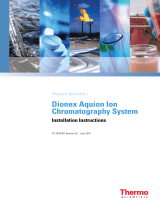 Thermo Fisher Scientific Dionex Aquion Ion Chromatography System Guide d'installation
Thermo Fisher Scientific Dionex Aquion Ion Chromatography System Guide d'installation
-
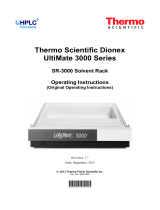 Thermo Fisher Scientific Dionex UltiMate 3000 Series Mode d'emploi
Thermo Fisher Scientific Dionex UltiMate 3000 Series Mode d'emploi
-
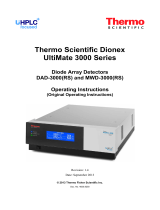 Thermo Fisher Scientific Dionex UltiMate 3000 Series Mode d'emploi
Thermo Fisher Scientific Dionex UltiMate 3000 Series Mode d'emploi
-
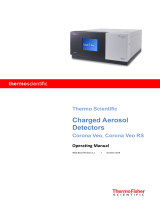 Thermo Fisher Scientific Corona Veo, Corona Veo RS Mode d'emploi
Thermo Fisher Scientific Corona Veo, Corona Veo RS Mode d'emploi
-
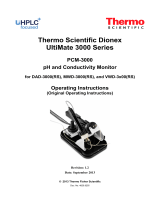 Thermo Fisher Scientific Dionex UltiMate 3000 Series Mode d'emploi
Thermo Fisher Scientific Dionex UltiMate 3000 Series Mode d'emploi
-
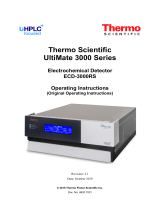 Thermo Fisher Scientific UltiMate 3000 Series Mode d'emploi
Thermo Fisher Scientific UltiMate 3000 Series Mode d'emploi
-
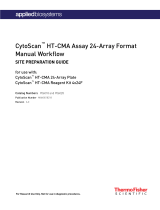 Thermo Fisher Scientific CytoScan HT-CMA Assay 24-Array Format Le manuel du propriétaire
Thermo Fisher Scientific CytoScan HT-CMA Assay 24-Array Format Le manuel du propriétaire
-
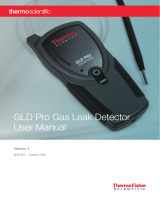 Thermo Fisher Scientific GLD Pro Gas Leak Manuel utilisateur
Thermo Fisher Scientific GLD Pro Gas Leak Manuel utilisateur
-
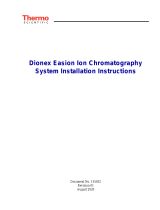 Thermo Fisher Scientific Dionex Easion Ion Chromatography System Guide d'installation
Thermo Fisher Scientific Dionex Easion Ion Chromatography System Guide d'installation














































